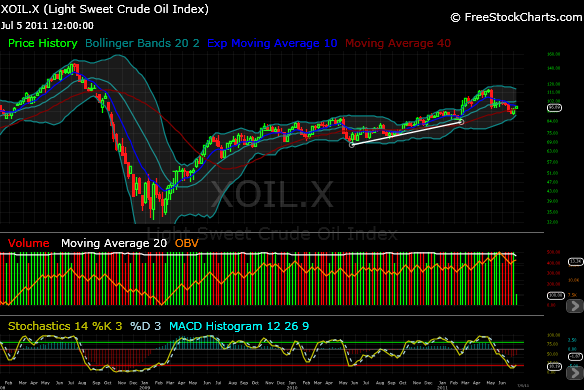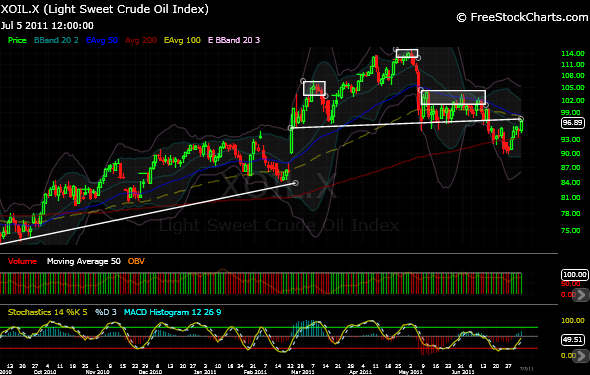Reading the blogs and trading sites and watching CNBC Fast Money, one can infer that a growing number of traders are positioned too much in cash (aren’t we all when the market is moving up?) and are frustrated that we don’t get a pull back. Maybe I’m too young and too new to trading, but it’s been my experience since I started (around the time of the fall of Bear Sterns) that this market has a a riding lawn mower transmission- tortoise, hare, reverse. We just don’t get any ups and downs in short time frames that suit most human beings. We don’t get logical moves up, followed by logical moves down in the time frames that suit most people. We trickle up, rip higher, or go down without a pause, until we go the other direction. There have been exactly 3 buyable pullbacks since the March 2009 bottom. Nearly all the time has been passed by riding the upper Bollinger Band on the S&P.
You could hear a trader on Fast Money last night that was obviously under invested (again, like most of us) and lamenting about the oversold nature and how due for a pull back the market is. Today on the half time report, he called the close with two words: “Buy more” as if he had been buying for the past week. If this trader were intellectually honest, he would have said “Start buying small if you’re under invested” but trading is like trout fishing. The fish are always bigger when you’re telling your friends about catching them.
That is why the market will probably continue to move higher. Too much cash is anxious to get in. This is probably just market participant cash driving the market higher. Another round of retail cash hasn’t hit yet. I remember last year around the same time, when the Bush tax cuts were passed, a round of retail cash came it. You could see it from increased membership to trading newsletter sites and anecdotally from non-market followers putting extra cash into stocks. I have no idea what it was, but the relentless climb after the BP Macondo/ Deepwater Horizon fiasco was resolved and before the tax cut passing got a boost from new money flowing in. I’ll bet the same thing happens this year. The only way to keep up with this market short term, and beat it long term, is what I call the barbell strategy: torrid growth momentum on one end, nothing but cash in the middle, and slow growth, high yielding MLP, REITS, and telcos on the other end. Here’s an example: CRM, CMG, ISRG, NFLX, CRR, and LULU on one end (while these are all high growth names, it is a diversified group), 25%-33% cash, and NLY, KMP, and WIN (again, a diversified group) on the other end. This strategy excel in this straight up, straight down environment.


